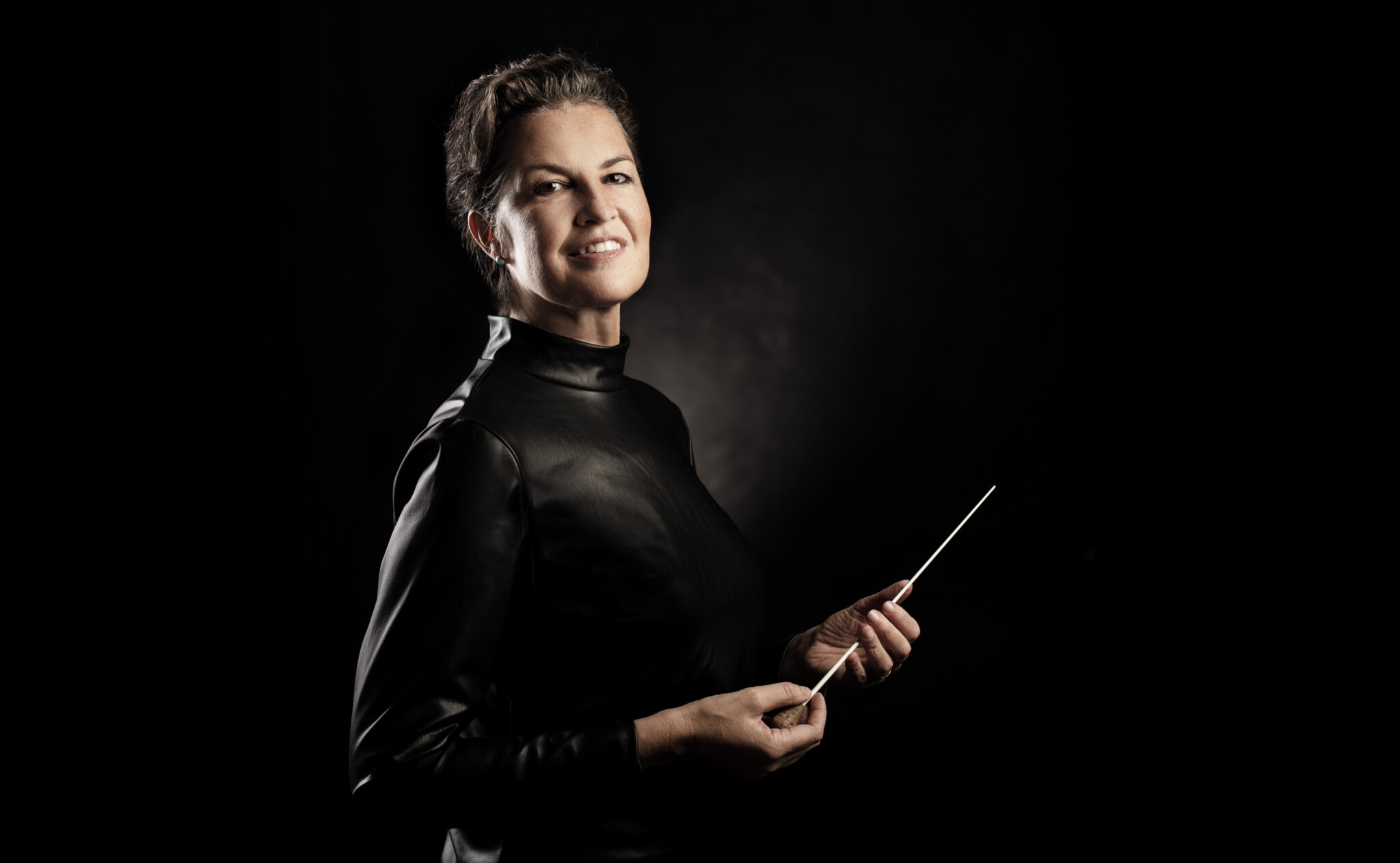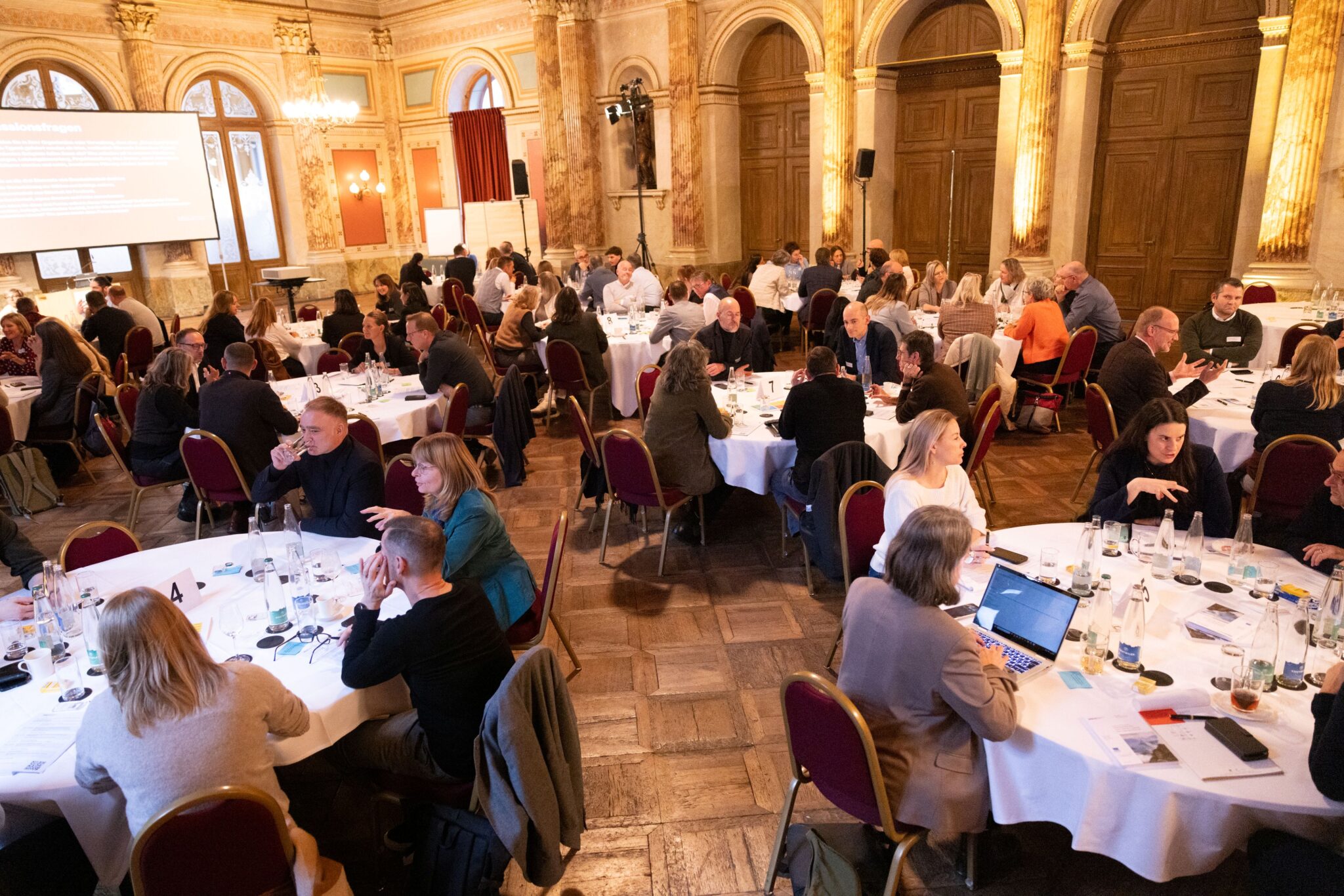Charisma – a social process

In the debate about leadership, supposedly new concepts are constantly emerging. As an example from culture, we take the symbolically charged figure of the orchestra conductor, a typical child of the 19th century. Together with a female conductor, we discover how this leadership role has developed over 200 years and what self-concept is associated with it today.
Andreas Jäger Fontana, Lecturer (AJF): Graziella Contratto, you have been studying the parallels between business, leadership and orchestras for almost 20 years. Let’s start with the birth of the modern conductor – how did this figure emerge?
Graziella Contratto, Conductor, Entrepreneur, Curator (GC): The typical orchestral setting with a conductor and a small conductor’s baton appeared at the beginning of the 19th century. Until the French Revolution, both the nobility and the church commissioned compositions and were the ‚owners‘ of orchestras or so-called court chapels. These clients were replaced by the aspiring bourgeoisie. Felix Mendelssohn-Bartholdy (1809-1847) was one of the first conductors who was the only one to wield a small (ivory) stick while standing and with a complete overview of the score. He was chief conductor of the so-called Leipzig Gewandhaus Orchestra, still one of the great German symphony orchestras today. It was founded as a civic institution, initiated by Leipzig textile merchants who financed both the orchestra and a concert hall. Hence the name.
AJF: Why did the conductor’s role become a requirement at all? Many orchestras only had a first violinist or a harpsichordist, sometimes also a baton player with a stick or a roll of paper – was that no longer enough?
With industrialization, the ego of bourgeoisie grew and influenced music as well as the need for management knowledge
GC: The conditions that led to the ‚invention‘ of modern conducting are strongly linked to the growing self-confidence of the rising bourgeoisie. With economic success, also thanks to industrialization, the ego of the bourgeoisie grew, making them feel a little like neo-aristocrats. This ego also wanted to see itself glorified in art – literature, visual art, music. Composers wrote ever more complex works for this growing ego, the size of the orchestra grew and the psychological density of the compositions literally exploded in the Romantic and late Romantic periods of the 19th century up to the beginning of the 20th century. Is there anything comparable in business history?
AJF: Yes, from the last quarter of the 19th century. In this context, the historian Alfred D. Chandler Jr (1918-2007) describes the emergence of modern, large industrial companies as a transition from personal capitalism (owner-managed) to managerial capitalism. Organizing a hierarchy of managers in large companies also represented a complexity that had to be mastered. The need for management knowledge led to the founding of business schools (Pennsylvania 1881, Harvard 1908, MIT 1914). The focus was on management, not leadership.
GC: But could it still be said that a kind of dirigiste leadership has become necessary in the business sector? In pre-industrial times, a master craftsman was in control of all production steps for his goods and could also intervene to correct them.
AJF: This could no longer be achieved by a single person in the emerging large companies.
GC: Just as a conductor cannot be expected, for example, to master the clarinet playing of an orchestral musician better than the musician, although as the conductor he must incorporate the clarinettist’s playing into the overall strategy, i.e. the artistic interpretation. Conductors resemble a controlling body that has been brought in from outside. They are the only ones with a score (all orchestral musicians only have their individual parts in front of them), develop a strategy without mastering the individual instruments, rebuke, reward, criticize and still have to be at the service of the work. This responsibility combined with non-expertise in the operational area needs a touch of magic to make it really work – let’s call it Charisma.
The great charismatics are being replaced by young conductors who are surfing the genius cult wave
AJF: As far as the effect of Charisma is considered, it was primarily with reference to the Lectures On Heroes by the Scottish historian Thomas Carlyle (1795-1881), published in 1841. In the wake of Carlyle, reference is made to the Great Man theory. Max Weber (1864-1920) defines Charisma as a quality of a person that is considered exceptional and for the sake of which the person is accepted as exemplary and as a leader. It is not important whether this quality is objectively present, but only whether it is subjectively perceived by those being led. For Weber, charismatic leadership by definition overturns the past, is revolutionary, a typical initial phenomenon. The decisive factor is that Charisma rejects everything planned and rational as undignified. And Weber did regret this tendency. Weber understands the loss of significance of Charisma as a suppression of the scope of individual action, caused primarily by processes of rationalization such as bureaucratic discipline.
GC: In the orchestral history of the 20th century, we are dealing with great charismatic conductors such as Wilhelm Furtwängler, Sergiu Celibidache, Herbert von Karajan and Leonard Bernstein – to all of whom both orchestra and listeners gave their heart and soul. During my time as Claudio Abbado’s assistant at the Berliner Philharmoniker, I got to know a few pilgrim groups. They traveled everywhere after the maestro, at horrendous prices for travel, accommodation and tickets, but the immaterial experience of a concert under his direction filled them with deep, apparently existential gratitude. That was difficult for my generation, which associated any form of charismatic leadership, indeed leadership in general, with dictatorship, terror and mass hysteria. We were looking for a different form of connection with our audience and felt more like mediators. Sometimes I think that the audience might be missing something in our concerts, I used to call it the mythical surplus. That’s why there are relatively few international big names among the 50-60 year old conductors. However, there is now a new generation of young conductors who could surf that genius cult wave again. They are the grandchildren of the great figures of history.
AJF: Even if the discussion of the factors of successful leadership developed further in the 20th century, this still takes place in the context of what Chandler called managerial capitalism. The emergence of neo-Charismatic leadership theories in the 1980s is neither a coincidence nor a mere fad in the history of ideas. In his work Post-Capitalist Society (1993), Peter F. Drucker spoke of a major transformation: »We are clearly still in the middle of this transformation – indeed, if history is any guide it will not be completed until 2010 or 2020«. This transformation was triggered not only by technological innovations, but also by the politically desired dismantling of market regulations and the resulting intensification of competition. This triggered a renewed call for charismatic leaders to provide orientation.
GC: If you listen to the orchestral sound on records by Herbert von Karajan or Leonard Bernstein from the 1960s, for example, you can still sense this strongly formative, visionary-romantic leadership. But technological progress was also made in the classical music: the first stereo recordings from DECCA, the CD, VHS cassettes, then the DVD, the DAT recording devices – at the same time, the conductor’s leadership model remained surprisingly closely linked to the 19th century, with this habitus of the exceptional. Gregor Piatigorsky, a famous cellist, once wrote that the conductor as performer is ballerina, virtuoso and prima donna all in one. If you look at the pay gap between conductors and orchestras, the cult of stardom and the PR for conductors, this thesis is still true.
New organizational models are emerging in the business world; in music, the work is placed at the center
AJF: Today, towards the end of the transformation predicted by Drucker and the emergence of new organizational models (e.g. self-organizing networks), concepts such as shared leadership or even humble leadership are being postulated. Edgar Schein reminds us that leadership does not need to be heroic, but rather community building. How have orchestras responded to these developments, have they jumped on the bandwagon of neo-Charismatic leadership or gone straight towards self-organization?
GC: My generation of conductors puts the work at the center, the communication with an audience (still present or yet to be won over), the historically informed interpretation instead of the Karajan sound that was poured over every work from Bach to Schönberg. I like the term humble very much. From an orchestral perspective, transformational leadership has become increasingly important.
AJF: So, the importance of Charisma is also evident in today’s world of conducting? Bernard M. Bass‘ transformational leadership approach is at the heart of neo-charismatic leadership theories. »The transformational leader« says Bass in 1985, »uses Charisma, individualized consideration, and intellectual stimulation to inspire employees to make extraordinary efforts.«
GC: Yes, exactly – if you remember what a horrendously difficult level is now demanded in selection procedures for orchestral positions, it is logical that a kind of eye level between conductor and orchestra must be a natural consequence. The attitude of the legendary conductors who insulted some of the orchestra members, accusing them of stupidity and incompetence – there are still a few vivid examples of this on YouTube from rehearsals with Arturo Toscanini – is definitely a thing of the past. But it doesn’t work completely without Charisma either, even if today I would rather speak of a Charisma mix in the context of a symphony orchestra. There are conductors who can fascinate an orchestra with their sheer knowledge of an era. Others have strong social skills and immediately understand how to get the orchestra to perform at its best. Still others sparkle with youthful enthusiasm and show original new ways of performing traditional repertoire.
AJF: In this sense, Charisma manifests itself in the dynamic relationship between the leader and the persons being led in specific situations and contexts. The respective mission is what brings both – leader and led – together and holds them together. Charisma research in the tradition of Max Weber shows exactly this: Charisma is not primarily a question of exceptional individual qualities, but rather a social process as an everyday phenomenon.


Kommentare
0 Kommentare
Danke für Ihren Kommentar, wir prüfen dies gerne.